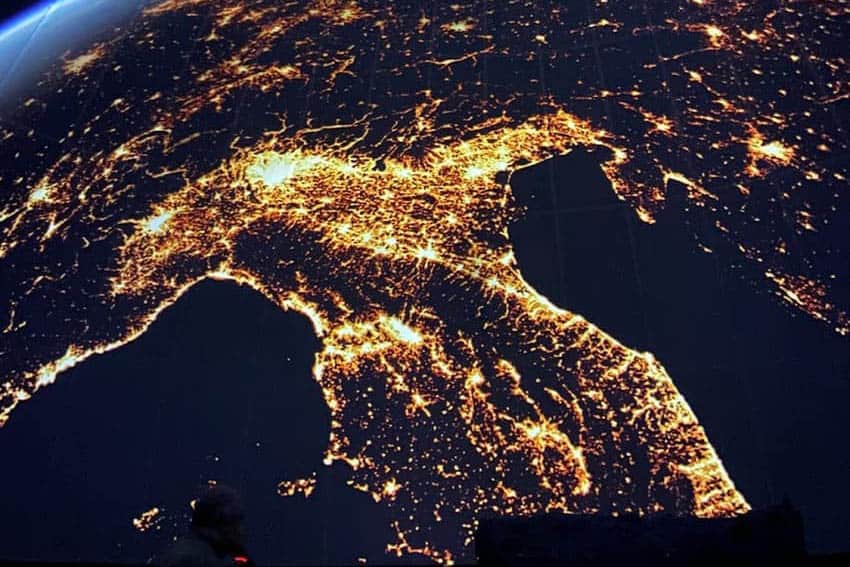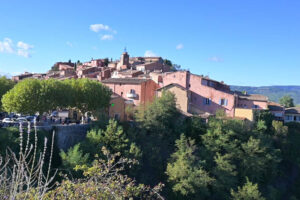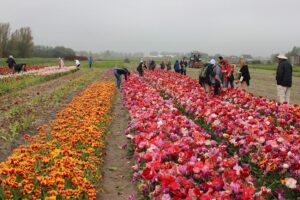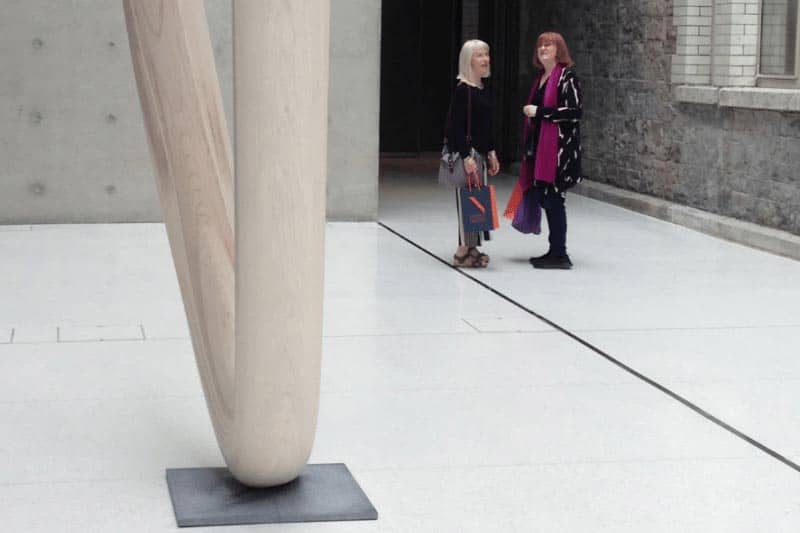
Five Fab Things to Do in Dublin
By Faye S. Wolfe
Three hundred years ago Boston-born Benjamin Franklin dubbed Dublin a “magnificent city.”

That’s still true. Historic, lively, and stylish, Dublin’s got plenty to do and see, yet it’s manageable, a city on a human scale.
(It’s the tallest building, part of Google’s European headquarters, and is only 18 stories .) And you can have a fierce good time just strolling its streets, window-shopping, and, of course, lifting a pint in one of its lively pubs.
To the south of the River Liffey, which flows through the center of Dublin, are the formal, brick Georgian and neoclassical townhouses fronting Merrion Square and Stephen’s Green, lovely parks with shady walks and grassy swards.
(You’d never know that during the Easter Rising of 1916, Volunteers exchanged fire with soldiers from the quaint gatekeeper’s lodge in Stephen’s Green.)
In this area, you’ll find the National Gallery of Ireland, National Museum, Natural History Museum, and the Irish Whiskey Museum. A stone’s throw from the Liffey are the narrow streets of Temple Bar, where shops, galleries, restaurants, and theaters stand cheek by jowl.
On Saturdays, you can assemble a picnic from its outdoor market or simply gawp at the wondrous displays of fresh fruits, cheeses, breads, and more.
A Celtic Treasure

Anyone who’s ever been to Dublin will tell you not to miss the Book of Kells at Trinity College—and they’re right. It would take you nearly a year to see all its 340 folios; each day a different one is on display under glass.
The illustrated manuscript (circa 800 AD) has the quiet radiance of fragile, ancient things. The longer you look, the more you’re pulled in by its intricate patterns, lettering, and imagery: beasts of every stripe, mythical and Mondial, dragons, lions, otters, plus flowers, vines, and odd monkish characters nestled in calligraphic crannies.
Entrancing, and sometimes a wee bit disconcerting: when you’re looking at it and realize a little bearded face is peeking back at you.
A turn up the stairs takes you to the Long Room Library, a soaring space with alcove after alcove filled with bookcases filled with books—a Borges ficcione brought to life. Give in to it, sit and ogle and daydream about the lives of bygone scholars whose presence hasn’t entirely evanesced.
Little Museum, Big Style
The Little Museum of Dublin slices history differently. It’s in one of those Georgian townhouses, complete with elegant staircase, fireplaces, long windows facing Stephen’s Green, and other features conjuring up life there when it was new. But the museum’s way of telling the city’s stories is contemporary, cheeky, and charming.
The guides know their lore and are funny to boot. Walls are plastered with old posters, photographs, signs, letters, newspaper articles—and a crossword. An oversize guitar and an East German-made Trabant car dominate the “U2 Made in Dublin” room; it’s amazing how young Bono & Co. look in shots of early gigs.
The Irish Times room kitted out with an old portable typewriter, a green-shaded desk lamp, and assorted belongings of legendary Robert “Bertie” Smylie, the IT’s editor from 1934 to1954, recalls a time when newspapers were the lifeblood of a city and a culture.
Through September 24, the main floor’s current exhibition, “A Little History of the Dublin Pub,” is a full-spectrum take on that institution, right down to its genuine wooden “nook,” where women, priests, and politicians once drank in privacy on pub premises.
The National Gallery of Ireland Opens Its Wings

After a multi-million-dollar, multiyear restoration, the National Gallery of Ireland just reopened its national art collection wings, and the refurbished settings are so gorgeous you almost forget to look at the art. The deep teal walls of the sweeping ground-floor gallery set off larger-than-life portraits of aristocrats by such masters as Thomas Lawrence and Samuel Raeburn.
The painting labels relate the dramatic lives these nobles led, one, for example, keeping house with both his wife and his mistress. The caption for a Gainsborough oil offers the juicy detail that Mrs. Christopher Horton (later, the Duchess of Cumberland) had “the most amorous eyes in the world.”
Gainsborough was not enamored exclusively of the upper crust; the striking portrait “Cottage Girl” shows a forlorn barefoot child in ragged hand-me-downs. Velasquez’s “The Kitchen Maid with the Supper at Emmaus” is another poignant portrait of a have-not.

The Denise Levertov poem it inspired captures its subtle intensity: “ She listens, listens, holding her breath.” Other don’t-miss beauties include works by Goya, Rembrandt, and Rubens and a room full of Irish artist Harry Clarke’s brilliant stained glass windows.
Vermeer and the Masters
Right now, though, all eyes are turned to “Vermeer and the Masters of Genre Painting: Inspiration and Rivalry,” through September 17.
The exhibition puts Vermeer’s work in context, juxtaposing 10 of his works (almost a third of his surviving oeuvre) with genre paintings by accomplished contemporaries.
For me, the show affirmed that Vermeer truly is peerless. He painted the same subjects as his fellow artists, but take a seat in any room, and his version of a woman writing a letter or making lace jumps out from the rest.
Still, given a chance, works by Jan Steen, Gerrit Dou, Gabriel Metsu, et al, reveal their marvels, and this gem of an exhibition will keep you moving back and forth, to and fro, to compare and contrast.
Please Ring the Bell

Christ Church Cathedral, just west of Temple Bar, turns up on every list of places to see in Dublin. Not the church-going sort? Fans of The Tudors will enjoy seeing the stand-in location for the site of Henry VIII’s marriage to Jane Seymour.
Henry never set foot in here, but Norse king Sitriuc cofounded it in 1028, King Richard II presided, and James II took mass here.
Dublin’s oldest building looks more Gothic than it is. The tilting north wall dates to the 13 th century, as does the Chapter House ruin in the courtyard, but the flying buttresses are Victorian.
In the 1870s, a whiskey distiller paid what would be millions in today’s money for its “restoration.” Sections were razed, others added, and exquisite stained glass and tile floors were installed in the nave. (The medieval originals that inspired those tiles’ design can be seen in a side chapel.)
On a guided tour, you can ring one of the 19 bells in the tower, reached via a windy 84-step spiral staircase and a windy rooftop walkway. Don’t skip the crypt, where a mummified cat perpetually chases a mummified rat, both found in the church organ.
Next door, Dublinia gives you the low-down on city life when Vikings set up shop there, and cheerful docents in period dress tell rosy-cheeked schoolchildren about the Black Death and other aspects of medieval Dublin days.
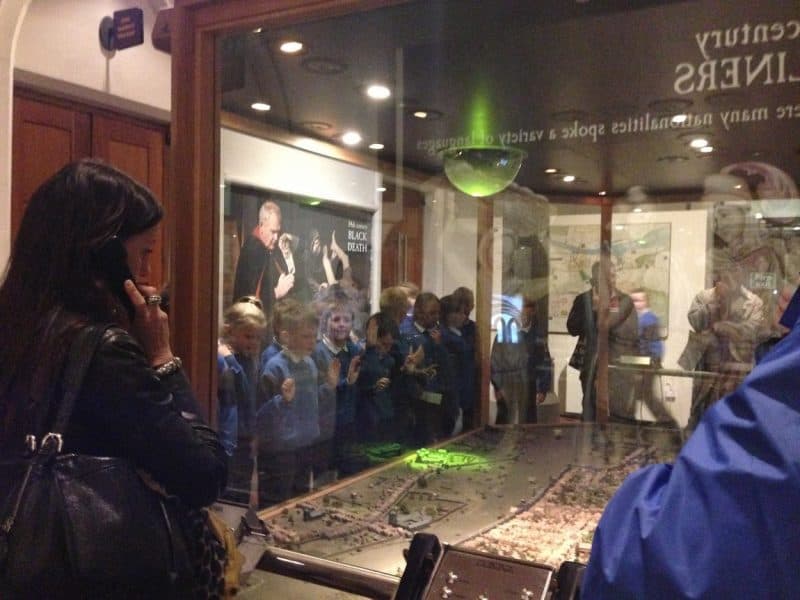
Pub Crawling
It’s a cliché that cities are great for people-watching, but really there is something about Irish faces, rosy-cheeked or jowly, that draws the eye.
They may not be classically or especially beautiful; it’s more about how they suggest a story, an inner life, a willingness to connect with life, to tell a story, have a laugh, have some craic (Irish for fun). And in a pub, of course, to lift a glass.
At O’Donoghue’s , people-watching can be an extreme sport. One of the city’s oldest pubs, it’s known for having live music every night.
On weekends patrons jam its rooms, even the canopied alley between two parts of the pub. (Note: the alley being outside, people can smoke, and smoke they do.)
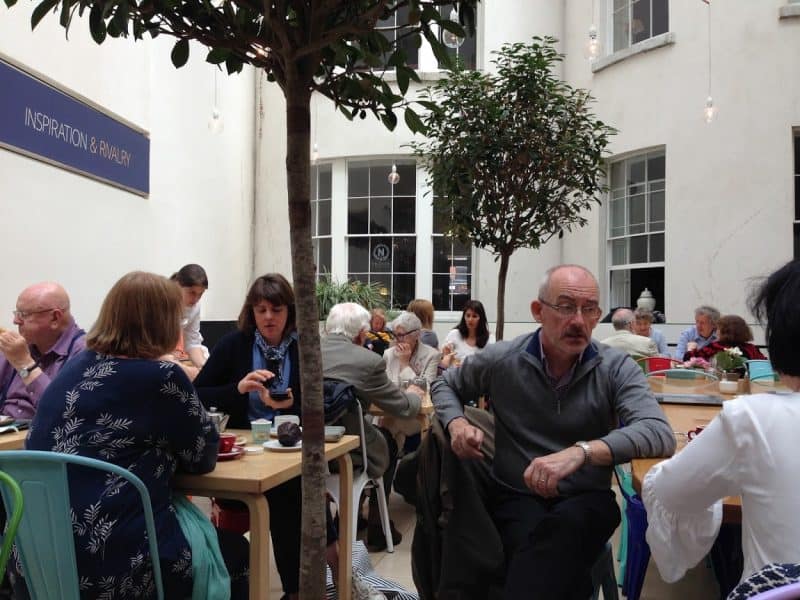
The gift of the gab is in full swing here, making for a surround-sound experience.
Dublin’s pubs, of course, are a key tourist attraction; they’ve been a part of the city scene for centuries. Even the Christ Church Cathedral crypt was once a “tippling house.”
As much as for wetting your whistle, pubs are where you go to hear music, socialize, eat, and drink in the atmosphere, knowing that you’re where Bill Clinton, Yeats, or James Joyce bent an elbow, (Cassidy’s, Toner’s, or The Brazen Head, respectively). Some may have no claim to fame other than their conviviality and sheer good looks, e.g., the unspoiled Victorian pub The Long Hall.

Yet another of Dublin’s attractions is the warm welcome you so often meet there, and one of the reasons it’s hard to leave. You can try the “Irish goodbye”: just slip away. (Writer Cahir O’Doherty says, “Irish people do not understand brevity,” making departures prolonged. Irish goodbyes “spare you the anguish.”) Or avoid the anguish this way: promise yourself that you’ll be back before you know it.
Shopping: In Temple Bar, you’ll find everything from souvenir tees to minimalist Scandinavian menswear.
On display in the cheerful Irish Design Shop , 41 Drury Street, are appealing pottery, jewelry, letterpress cards, woodcuts, and other handcrafted goods.
Scout , 5 Essex Street West, stocks clothes and accessories of up-to-the-minute Irish design and housewares, including subtly scented, Dublin-made Clean Slate candles Indigo & Cloth sells the minimalist menswear, also, local handmade chocolates and Belfast-based Derek Wilson’s ceramics.
And if you need reminding that Guinness isn’t everything, stop by the L. Mulligan Whiskey Shop on Clarendon Street.

At its tastings, you can test your sensitivity to the differences between single-malt, single-grain, and single-pot-still whiskeys and learn about a new generation of distilleries springing up around Ireland.
Eating: Matt the Thresher is two townhouses made into one high-ceilinged, multilevel restaurant, with a fireplace, long marble bar, and well-deserved reputation for excellent seafood: oysters, prawns, maybe a fish pie made with salmon, scallops, haddock, and smoked gubbeen mash.
It’s not just about the seafood: the pistachio game terrine, served with fig jam and sun-dried tomato–bread toast is melt-in-your-mouth delicious, as are the desserts. Try the Eton Mess, made of meringue, whipped cream, and strawberries.
Transport: Airlink Express buses get you into the center in about 30 minutes. Luas trams (https://www.luas.ie/) serve the city and suburbs. DART trains run north to Malahide and south to Greystones, County Wicklow. A Hop-on Hop-off Bus pass simplifies seeing the sights.
- Paris: Getting to the Famous Gardens - January 13, 2023
- The Eric Carle Museum for Children and Illustrators - July 19, 2020
- A Blissful Family Vacation in Santa Rosa, California - June 8, 2019


